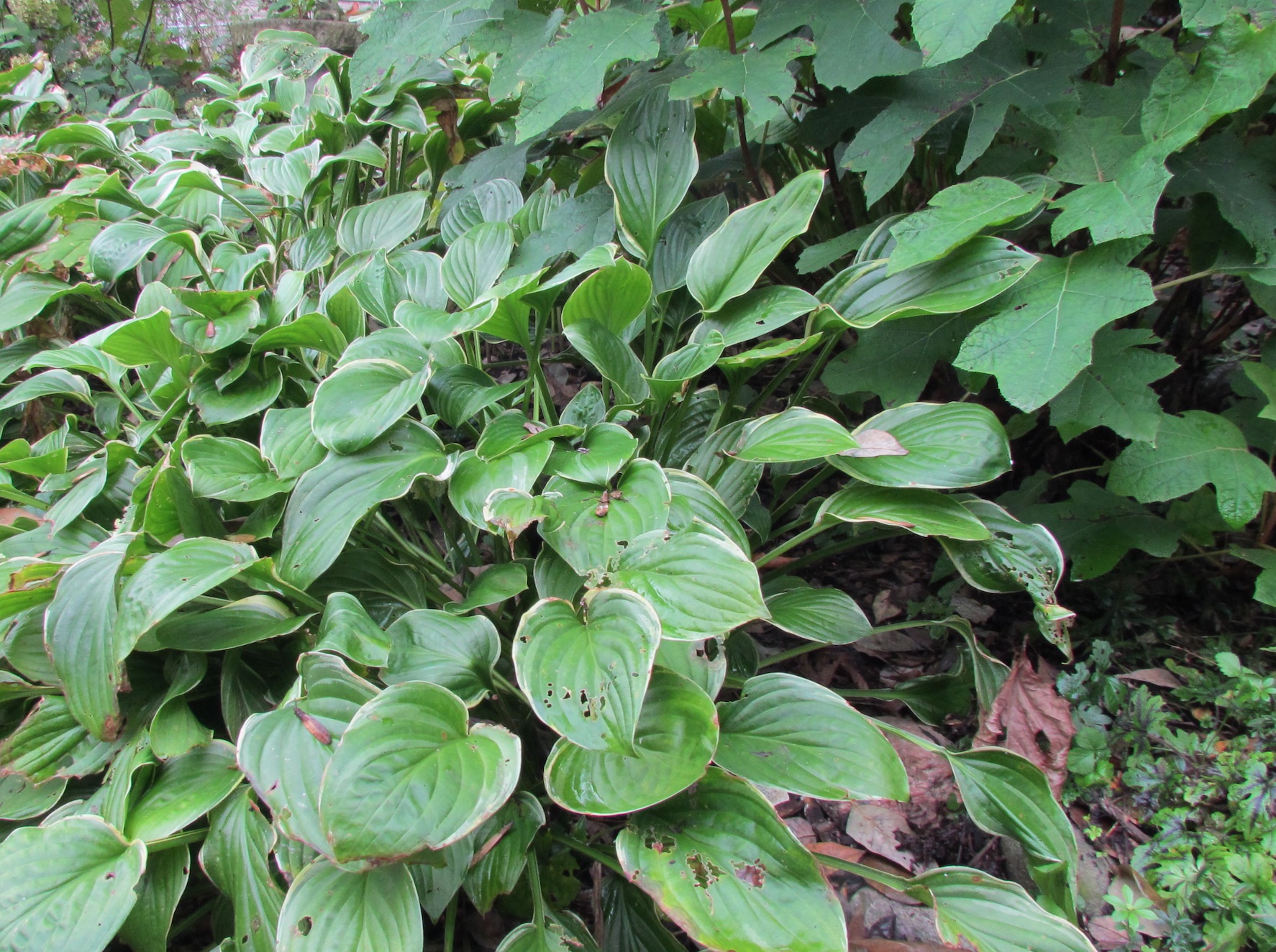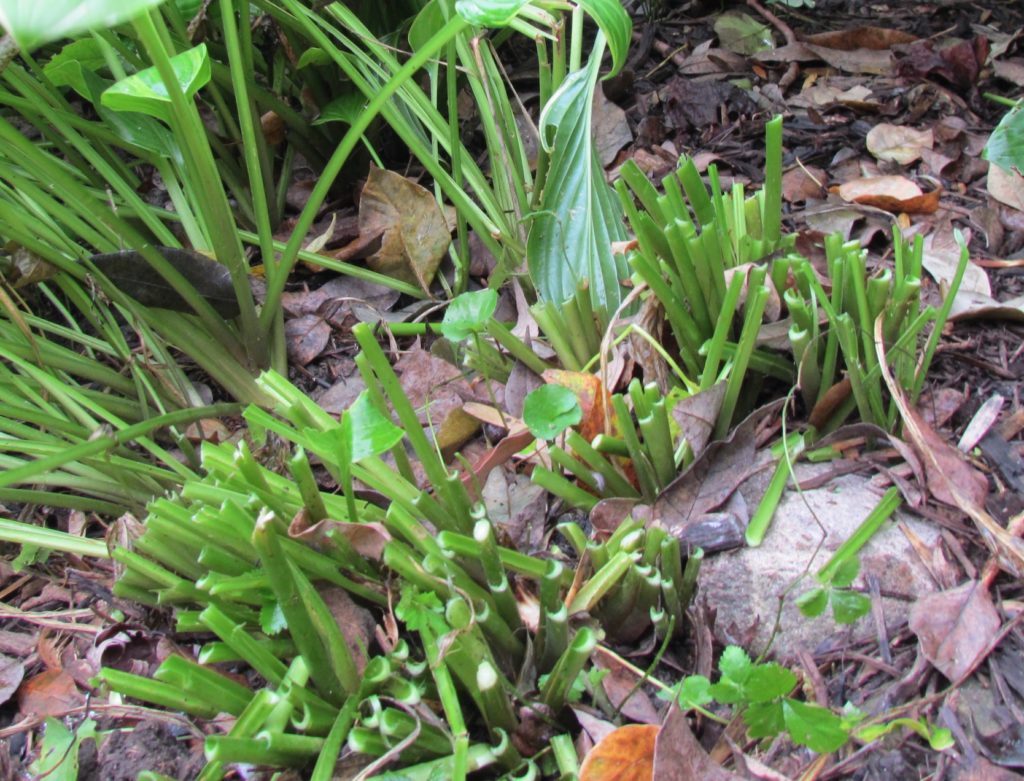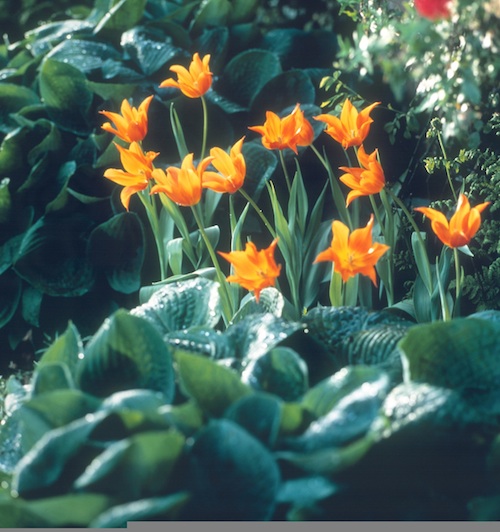
Hostas are easier to cut back before a hard freeze turns them to mush. (C) Jo Ellen Meyers Sharp
When it comes to fall tasks with perennials, how and what you do is pretty much up to you.
Unlike the trees and shrubs we talked about last week in this column, perennials are much less picky about whether they get cut back as part of fall cleanup.
First, there are lots of reasons to leave perennials upright: seed heads provide a food source for birds and other wildlife; native bees winter over in hollow stems; and winter interest. Leaving the plants upright also encourages self-sowing, which can be a blessing or a curse.
Second, there are lots of reasons to cut back perennials: it gives the landscape a tidy look; it rids the garden of insect- and disease-ridden plants; and it reduces self-sowing.

Cut back perennials close to the ground, but avoid cutting into the crown of the plants. (C) Jo Ellen Meyers Sharp
Even with that, some perennials just look better cut back and some can become a nuisance. Hostas, for instance, get really mushy and ugly after a hard freeze. It’s easier to cut them back before this happens. Although birds eat the seeds of black-eyed Susans and fall-blooming asters in winter, these plants self sow like crazy, creating too much of a good thing and a maintenance problem.
Given those considerations, go ahead and cut back lilies, daylilies, garden phlox, iris, geranium, monarda, daisies, coreopsis and any other plants that look bad. Cut them back as close to the base of the plant as possible. I usually leave up sedums, astilbe, Japanese anemone, coneflowers (Echinacea) lungwort (Pulmonaria), hellebores, epimedium, clematis and coral bells (Heuchera).

Before cutting back hosta and other perennials, plop in a few bulbs. Next spring, the perennial’s leaves will camouflage the ripening foliage of the bulbs. Photo courtesy Netherlands Flower Bulb Information Center
Before whacking back the perennials, plant among them some spring-blooming bulbs, such as tulips and daffodils. As the perennials leaf out next spring, the foliage will camouflage the ripening foliage of the bulbs. Hostas, coral bells, geraniums, lungwort, hellebores and epimedium are good companions with spring bulbs.